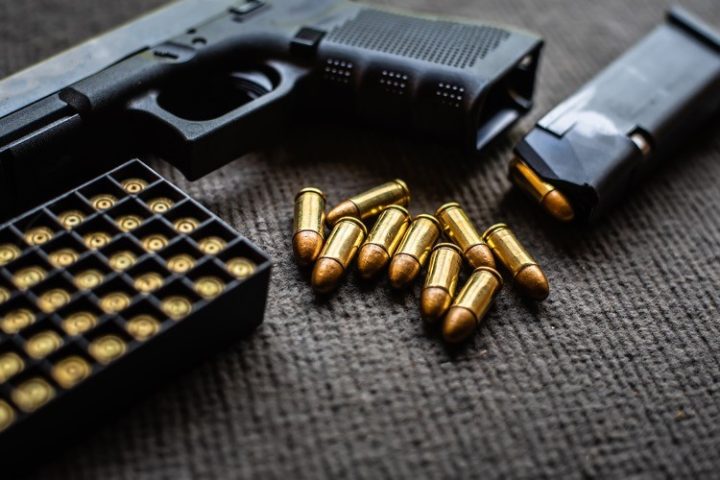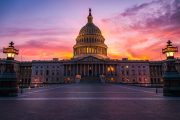
In ruling for the majority of the three-judge panel of the Fourth Circuit Court of Appeals on Tuesday, Judge Julius N. Richardson not only reversed a lower court’s ruling, he exposed the fatal flaw behind Congress’ creation of the Gun Control Act (GCA) of 1968: Congress relied on fudged numbers to make its case restricting the gun rights of those under 21.
The original lawsuit was brought by 19-year-old Natalia Marshall in 2018 after she was denied the freedom to purchase a handgun for personal protection. Familiar with firearms since an early age, she decided to attempt to purchase one through a licensed dealer, but was denied thanks to the 1968 law:
[It is] unlawful for any licensed … dealer … to sell or deliver any firearm or ammunition to any individual … who the licensee knows … is less than twenty-one years of age.
Richardson wrote:
When do constitutional rights vest? At 18 or 21? 16 or 25? Why not 13 or 33?
In the law, a line must sometimes be drawn. But there must be a reason why constitutional rights cannot be enjoyed until a certain age.
Our nation’s most cherished constitutional rights vest no later than 18. And the Second Amendment’s right to keep and bear arms is no different.
Plaintiff seeks an injunction and a declaratory judgment that several federal laws and regulations that prevent federally licensed gun dealers from selling handguns to any 18-, 19-, or 20-year-old violate the Second Amendment.
We first find that 18-year-olds possess Second Amendment rights. They enjoy almost every other constitutional right, and they were required at the time of the Founding to serve in the militia and furnish their own weapons….
Looking through this historical lens to the text and structure of the Constitution reveals that 18- to 20-year-olds have Second Amendment rights. Virtually every other constitutional right applies whatever the age. And the Second Amendment is no different.
The militia laws in force at the time of ratification uniformly required those 18 and older to join the militia and bring their own arms.
While some historical restrictions existed, none support finding that 18-year-olds lack rights under the Second Amendment.
Judge Richardson then opened Pandora’s Box:
We then ask, as our precedent requires, whether the government has met its burden to justify its infringement of those rights under the appropriate level of scrutiny.
To justify this restriction, Congress used disproportionate crime rates to craft overinclusive laws that restrict the rights of overwhelmingly law-abiding citizens.
And in doing so, Congress focused on purchases from licensed dealers without establishing those dealers as the source of the guns 18- to 20-year-olds use to commit crimes.
So we hold that the challenged federal laws and regulations are unconstitutional under the Second Amendment.
Despite the weighty interest in reducing crime and violence, we refuse to relegate either the Second Amendment or 18- to 20-year-olds to a second-class status. Congress may not restrict the rights of an entire group of law-abiding adults because a minuscule portion of that group commits a disproportionate amount of gun violence….
Neither the government nor [its “friends”, i.e., Brady, Giffords, Everytown, etc.] can show that the burden of the challenged laws imposed on 18- to 20-year-olds’ rights has led to any meaningful or measurable positive effects. This highlights the lack of a reasonable connection between licensed dealers and gun crimes.
This is extraordinary. After 53 years of “settled law,” Judge Richardson boldly concludes that Congress erred in using phony data to support its infringements of young citizens’ rights under the Second Amendment.
The two judges concurring were appointed by Republican presidents. The dissenting judge, Obama appointee James A. Wynn, Jr., predictably avoided confronting the arguments the majority presented. Instead, he claimed they gave the “gun lobby a victory” that was otherwise unmerited: “The majority’s decision to grant the gun lobby a victory in a fight it lost on Capitol Hill more than fifty years ago is not compelled by law.”
He then invented another reason why the Second Amendment and its impact on young citizens should be treated differently:
The Second Amendment is exceptional not because it is uniquely oppressed or imperiled, but rather because it is singularly capable of causing harm.
Wynn makes up a new “right” under the Constitution that he thinks must be taken into account when considering the Second Amendment: the “public’s right to live — or “right not to be shot.”
Wynn claimed that the restrictions in the GCA of 1968 applying to young citizens only prevented them from buying a handgun from a licensed dealer and therefore was not really an “infringement”:
Young adults aged 18 to 20 may still possess and use handguns, may still receive handguns as gifts, and can even purchase handguns through unlicensed, but otherwise legal, private sales.
In other words, in enacting the challenged provisions, Congress was careful not to burden use, possession, or non-commercial sales.
This is how a judge unmoored from the “originalist” position when considering what the Founders meant at the time they wrote the Second Amendment responds. Instead, he relied on the fact that, until now, the GCA of 1968 has successfully survived various constitutional challenges and therefore it must be good law:
The challenged provisions are longstanding because they, just like the federal ban on possession of firearms by the mentally ill, were passed in 1968 — over fifty years ago — and because similar provisions making 21 the minimum age to purchase or use certain firearms have been commonplace for more than a century [i.e., the National Firearms Act of 1934 was signed into law by Democrat President Franklin Roosevelt 87 years ago].
The ruling is likely to be challenged by the now anti-gun Justice Department under Biden, knowing that the majority of the judges on the full court are Democrats who will reverse the panel’s ruling. The chances that the inevitable appeal to the Supreme Court will be considered by the high court are slim.
The fight to restore the Second Amendment to its full and robust intention is painfully slow, but the goal is worthy and increasingly achievable. Tuesday’s initial ruling is a small victory in the larger war.



